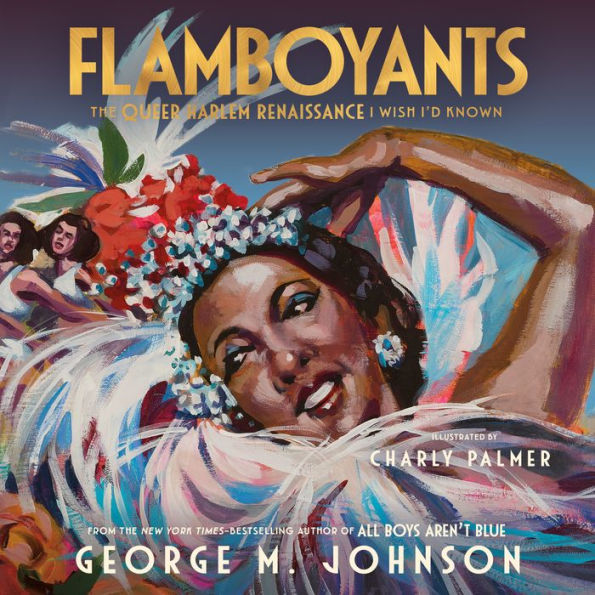From the Publisher
An Indie Bestseller
A New York Public Library Best Book of the Year
A School Library Journal Best Book of the Year
A Shelf Awareness Best Book of the Year
"A triumphant." —Shelf Awareness, starred review
"Johnson’s voice fills a void in teen literature, and their newest collection of essays about Black and queer folks from the 1920s unequivocally belongs on shelves across the country... There is no question, this must be purchased, read, and shared." –School Library Journal, starred review
"Flamboyants is not merely a much-needed history lesson, and it’s certainly not standard biographical fare. Johnson puts these figures in conversation with each other and with the present, enriching each essay with personal anecdotes delivered in a witty, conversational tone, and with cultural criticism that draws a direct through line from the Harlem Renaissance to Black queer culture today... Flamboyants suggests that we must see those who came before us as whole people to have any hope of making sense of our present." —BookPage, starred review
"Johnson (All Boys Aren’t Blue) combines incisive prose commentary, skewering verse, and revealing memoir in this collection of abridged biographies of Harlem Renaissance–era Black queer luminaries.... Palmer (The Legend of Gravity) combines background textures resembling subway maps and skyscrapers with canvas portraiture to produce graphic and hyperrealistic imagery that harkens to the Harlem Renaissance while maintaining contemporary appeal." —Publishers Weekly, starred review
"A sincere and beautifully illustrated ode to queer Black figures who shaped the Harlem Renaissance." —Kirkus
"Punctuated with vibrant paintings and expressive poetry...Through divulging details about how queerness affected their lives, Johnson paints pictures of important people who should serve as a beacon to Black queer people, as they do to the author." —Booklist
MAY 2025 - AudioFile
Author and activist George M. Johnson skillfully narrates their audiobook about several Black queer artists and performers from the Harlem Renaissance. Their lively delivery keeps listeners interested as they share brief biographies of Langston Hughes, Josephine Baker, and other greats of the era. Each chapter is delightfully introduced with music from the period that highlights the timeframe; however, the repetition of a couple songs seems a missed opportunity to share additional snippets of Black music from the Harlem Renaissance. Both teens and adults will enjoy listening to Johnson's masterful performance in this vivid production, especially when paired with the accompanying pdf, and will be inspired to discover more about the icons of the period. A.L.S.M. © AudioFile 2025, Portland, Maine
Kirkus Reviews
2024-06-15
Johnson, author of the acclaimed memoirAll Boys Aren’t Blue (2020), presents profiles of 12 notable queer Black people from the Harlem Renaissance.
This work introduces readers to figures including Langston Hughes, Ma Rainey, Zora Neale Hurston, and Countee Cullen. Johnson laments growing up learning about “white heterosexual men” who were presented as “our saviors.” They explain that “as a Black queer child, I had the right to know that Black queer people existed before me.…They paved the road for me to walk on. Yet that road was hidden from me and so many others.” This book shines a light on Black figures from “one of the queerest historical periods,” honoring the legacies of these musicians, artists, and authors and offering their lives as representation for the present generation. Throughout the biographies, mostly about five pages in length, Johnson weaves their own personal narrative, drawing parallels between the historical figures and society today. These elements frequently contribute additional layers of depth and relatability, as, for example, with their description of the impact of Josephine Baker’s internalized homophobia on her gay son and Claude McKay’s rejection of elitism within Black nationalism. Johnson’s own poems are interspersed throughout, further illustrating their passion for this history. Double-page spreads featuring Palmer’s vibrantly colored portraits open each narrative, adding further life to the subjects.
A sincere and beautifully illustrated ode to queer Black figures who shaped the Harlem Renaissance. (sources/recommended reading)(Nonfiction. 14-18)



